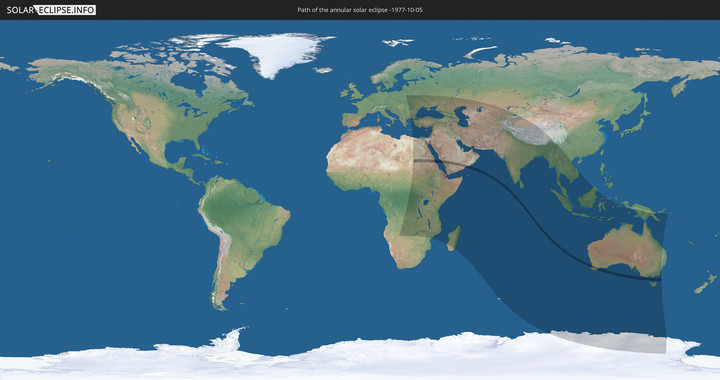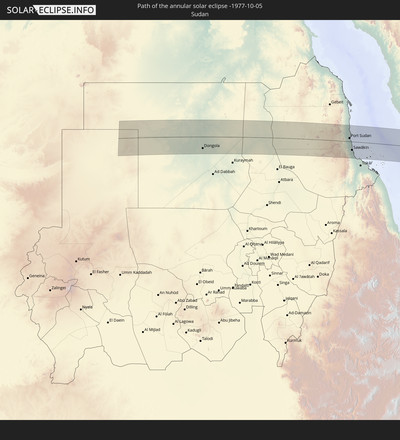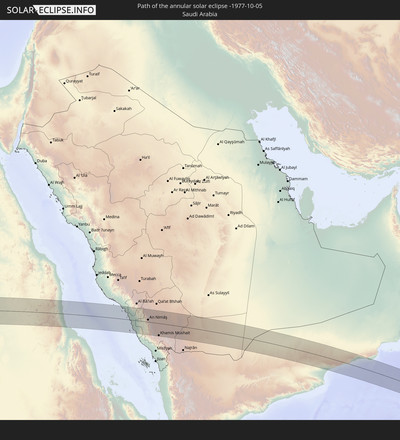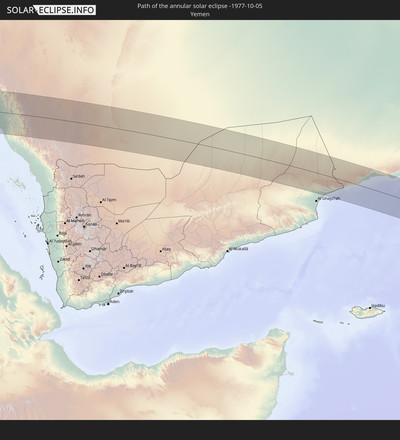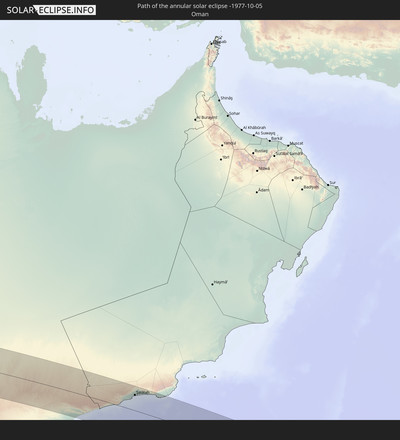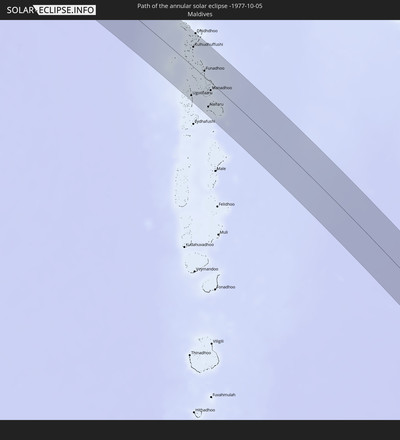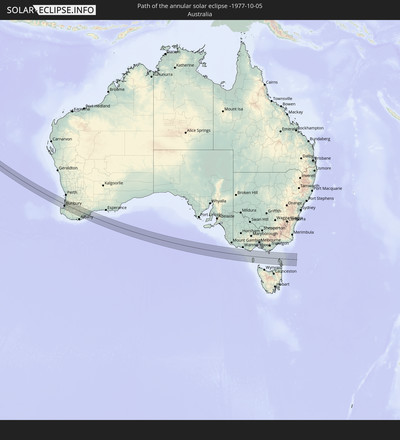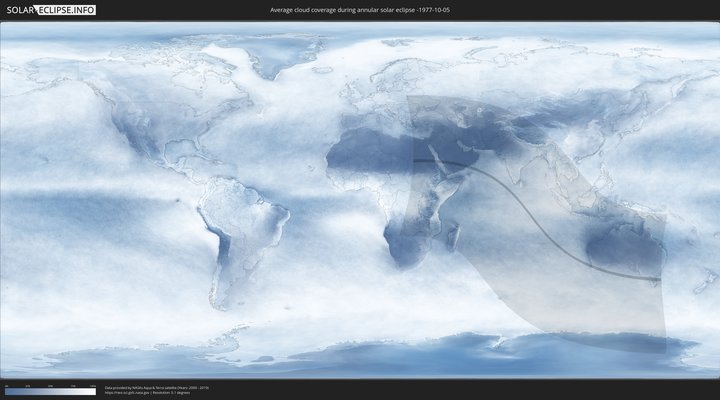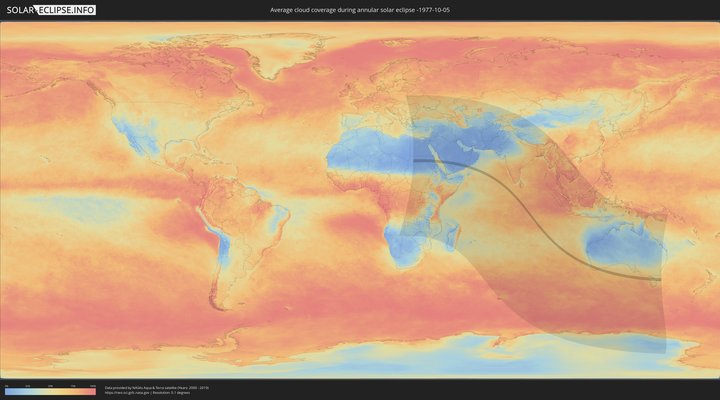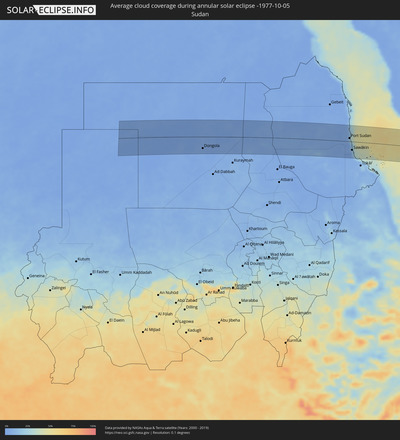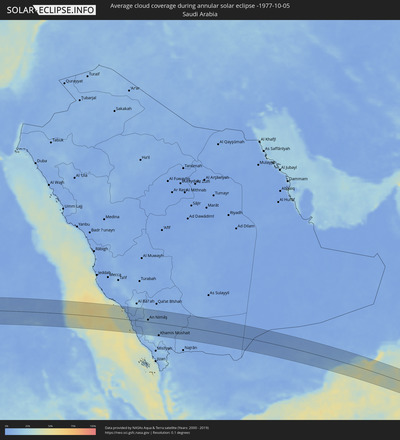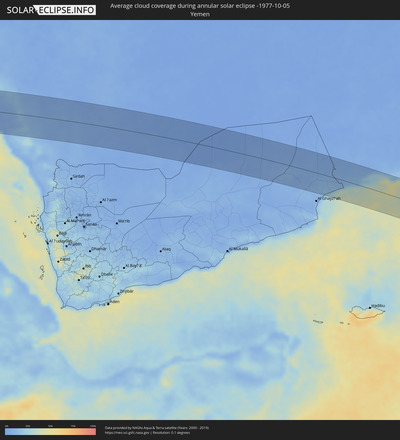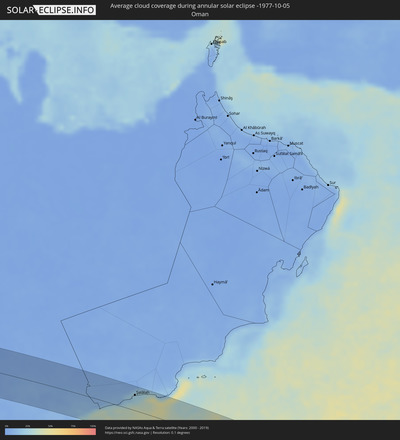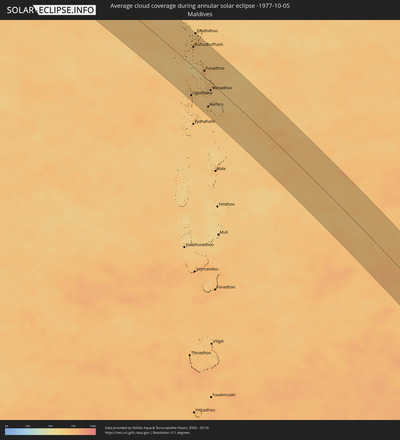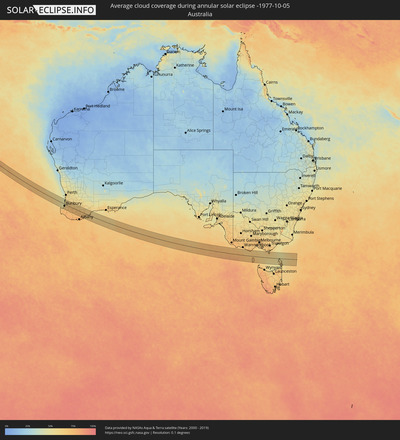Annular solar eclipse of 10/05/-1977
| Day of week: | Tuesday |
| Maximum duration of eclipse: | 02m53s |
| Maximum width of eclipse path: | 104 km |
| Saros cycle: | 12 |
| Coverage: | 97.1% |
| Magnitude: | 0.9713 |
| Gamma: | -0.1747 |
Wo kann man die Sonnenfinsternis vom 10/05/-1977 sehen?
Die Sonnenfinsternis am 10/05/-1977 kann man in 84 Ländern als partielle Sonnenfinsternis beobachten.
Der Finsternispfad verläuft durch 6 Länder. Nur in diesen Ländern ist sie als annular Sonnenfinsternis zu sehen.
In den folgenden Ländern ist die Sonnenfinsternis annular zu sehen
In den folgenden Ländern ist die Sonnenfinsternis partiell zu sehen
 Antarctica
Antarctica
 Russia
Russia
 Angola
Angola
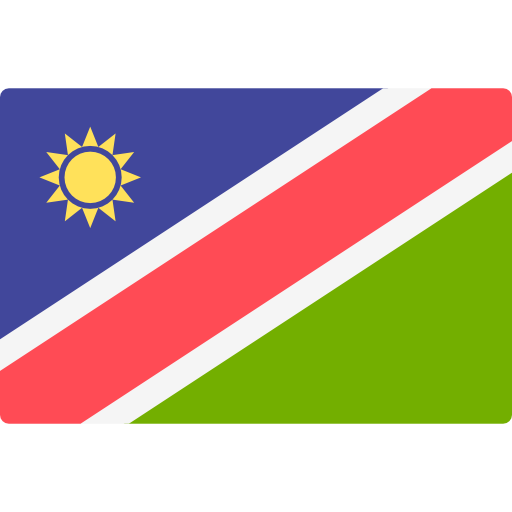 Namibia
Namibia
 Democratic Republic of the Congo
Democratic Republic of the Congo
 Poland
Poland
 Central African Republic
Central African Republic
 Greece
Greece
 Romania
Romania
 Sudan
Sudan
 Zambia
Zambia
 Ukraine
Ukraine
 Bulgaria
Bulgaria
 Belarus
Belarus
 Egypt
Egypt
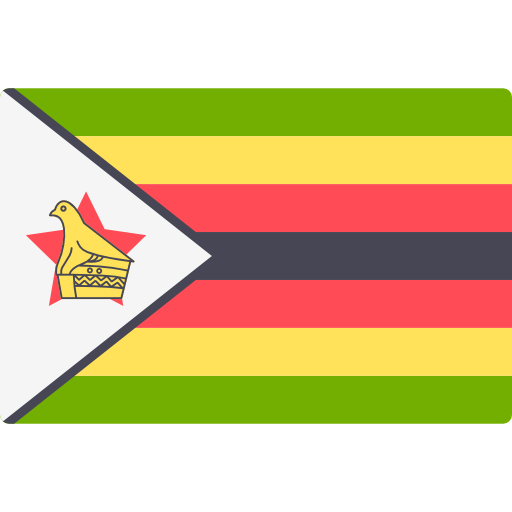 Zimbabwe
Zimbabwe
 Turkey
Turkey
 Moldova
Moldova
 Rwanda
Rwanda
 Burundi
Burundi
 Tanzania
Tanzania
 Uganda
Uganda
 Mozambique
Mozambique
 Cyprus
Cyprus
 Malawi
Malawi
 Ethiopia
Ethiopia
 Kenya
Kenya
 State of Palestine
State of Palestine
 Israel
Israel
 Saudi Arabia
Saudi Arabia
 Jordan
Jordan
 Lebanon
Lebanon
 Syria
Syria
 Eritrea
Eritrea
 Iraq
Iraq
 Georgia
Georgia
 French Southern and Antarctic Lands
French Southern and Antarctic Lands
 Somalia
Somalia
 Djibouti
Djibouti
 Yemen
Yemen
 Madagascar
Madagascar
 Comoros
Comoros
 Armenia
Armenia
 Iran
Iran
 Azerbaijan
Azerbaijan
 Mayotte
Mayotte
 Seychelles
Seychelles
 Kazakhstan
Kazakhstan
 Kuwait
Kuwait
 Bahrain
Bahrain
 Qatar
Qatar
 United Arab Emirates
United Arab Emirates
 Oman
Oman
 Turkmenistan
Turkmenistan
 Réunion
Réunion
 Uzbekistan
Uzbekistan
 Mauritius
Mauritius
 Afghanistan
Afghanistan
 Pakistan
Pakistan
 Tajikistan
Tajikistan
 India
India
 Kyrgyzstan
Kyrgyzstan
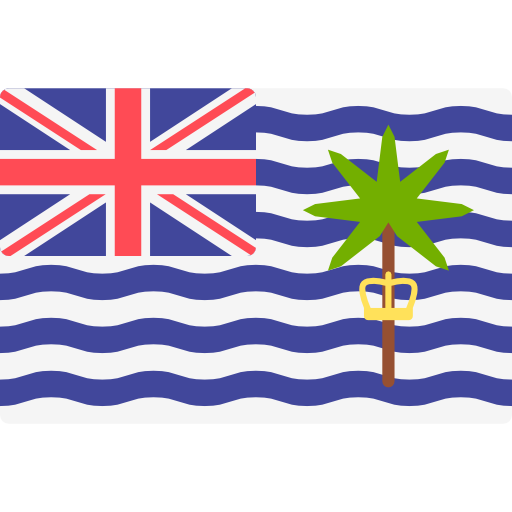 British Indian Ocean Territory
British Indian Ocean Territory
 Heard Island and McDonald Islands
Heard Island and McDonald Islands
 Maldives
Maldives
 China
China
 Sri Lanka
Sri Lanka
 Nepal
Nepal
 Bangladesh
Bangladesh
 Bhutan
Bhutan
 Myanmar
Myanmar
 Indonesia
Indonesia
 Cocos Islands
Cocos Islands
 Thailand
Thailand
 Malaysia
Malaysia
 Laos
Laos
 Vietnam
Vietnam
 Cambodia
Cambodia
 Singapore
Singapore
 Christmas Island
Christmas Island
 Australia
Australia
 Brunei
Brunei
 East Timor
East Timor
 Papua New Guinea
Papua New Guinea
How will be the weather during the annular solar eclipse on 10/05/-1977?
Where is the best place to see the annular solar eclipse of 10/05/-1977?
The following maps show the average cloud coverage for the day of the annular solar eclipse.
With the help of these maps, it is possible to find the place along the eclipse path, which has the best
chance of a cloudless sky.
Nevertheless, you should consider local circumstances and inform about the weather of your chosen
observation site.
The data is provided by NASAs satellites
AQUA and TERRA.
The cloud maps are averaged over a period of 19 years (2000 - 2019).
Detailed country maps
Cities inside the path of the eclipse
The following table shows all locations with a population of more than 5,000 inside the eclipse path. Cities which have more than 100,000 inhabitants are marked bold. A click at the locations opens a detailed map.
| City | Type | Eclipse duration | Local time of max. eclipse | Distance to central line | Ø Cloud coverage |
 Argo, Northern State
Argo, Northern State
|
annular | - | 06:19:05 UTC+02:10 | 18 km | 3% |
 Dongola, Northern State
Dongola, Northern State
|
annular | - | 06:19:13 UTC+02:10 | 55 km | 3% |
 Port Sudan, Red Sea
Port Sudan, Red Sea
|
annular | - | 06:20:38 UTC+02:10 | 16 km | 8% |
 Sawākin, Red Sea
Sawākin, Red Sea
|
annular | - | 06:20:54 UTC+02:10 | 40 km | 5% |
 Al Majāridah, 'Asir
Al Majāridah, 'Asir
|
annular | - | 07:19:35 UTC+03:06 | 8 km | 8% |
 An Nimāş, 'Asir
An Nimāş, 'Asir
|
annular | - | 07:19:41 UTC+03:06 | 13 km | 14% |
 Khamis Mushait, 'Asir
Khamis Mushait, 'Asir
|
annular | - | 07:20:30 UTC+03:06 | 72 km | 10% |
 Şalālah, Z̧ufār
Şalālah, Z̧ufār
|
annular | - | 08:04:32 UTC+03:41 | 45 km | 24% |
 Ugoofaaru, Raa Atoll
Ugoofaaru, Raa Atoll
|
annular | - | 10:01:33 UTC+04:54 | 50 km | 73% |
 Kulhudhuffushi, Haa Dhaalu Atholhu
Kulhudhuffushi, Haa Dhaalu Atholhu
|
annular | - | 09:59:40 UTC+04:54 | 33 km | 72% |
 Dhidhdhoo, Haa Alifu Atholhu
Dhidhdhoo, Haa Alifu Atholhu
|
annular | - | 09:59:13 UTC+04:54 | 58 km | 71% |
 Funadhoo, Shaviyani Atholhu
Funadhoo, Shaviyani Atholhu
|
annular | - | 10:01:01 UTC+04:54 | 10 km | 73% |
 Naifaru, Lhaviyani Atholhu
Naifaru, Lhaviyani Atholhu
|
annular | - | 10:02:37 UTC+04:54 | 43 km | 72% |
 Manadhoo, Noonu Atoll
Manadhoo, Noonu Atoll
|
annular | - | 10:02:02 UTC+04:54 | 13 km | 71% |
 Bunbury, Western Australia
Bunbury, Western Australia
|
annular | - | 15:31:47 UTC+08:00 | 23 km | 54% |
 Eaton, Western Australia
Eaton, Western Australia
|
annular | - | 15:31:51 UTC+08:00 | 19 km | 59% |
 Australind, Western Australia
Australind, Western Australia
|
annular | - | 15:31:50 UTC+08:00 | 15 km | 59% |
 Mandurah, Western Australia
Mandurah, Western Australia
|
annular | - | 15:31:26 UTC+08:00 | 61 km | 48% |
 Collie, Western Australia
Collie, Western Australia
|
annular | - | 15:32:19 UTC+08:00 | 5 km | 68% |
